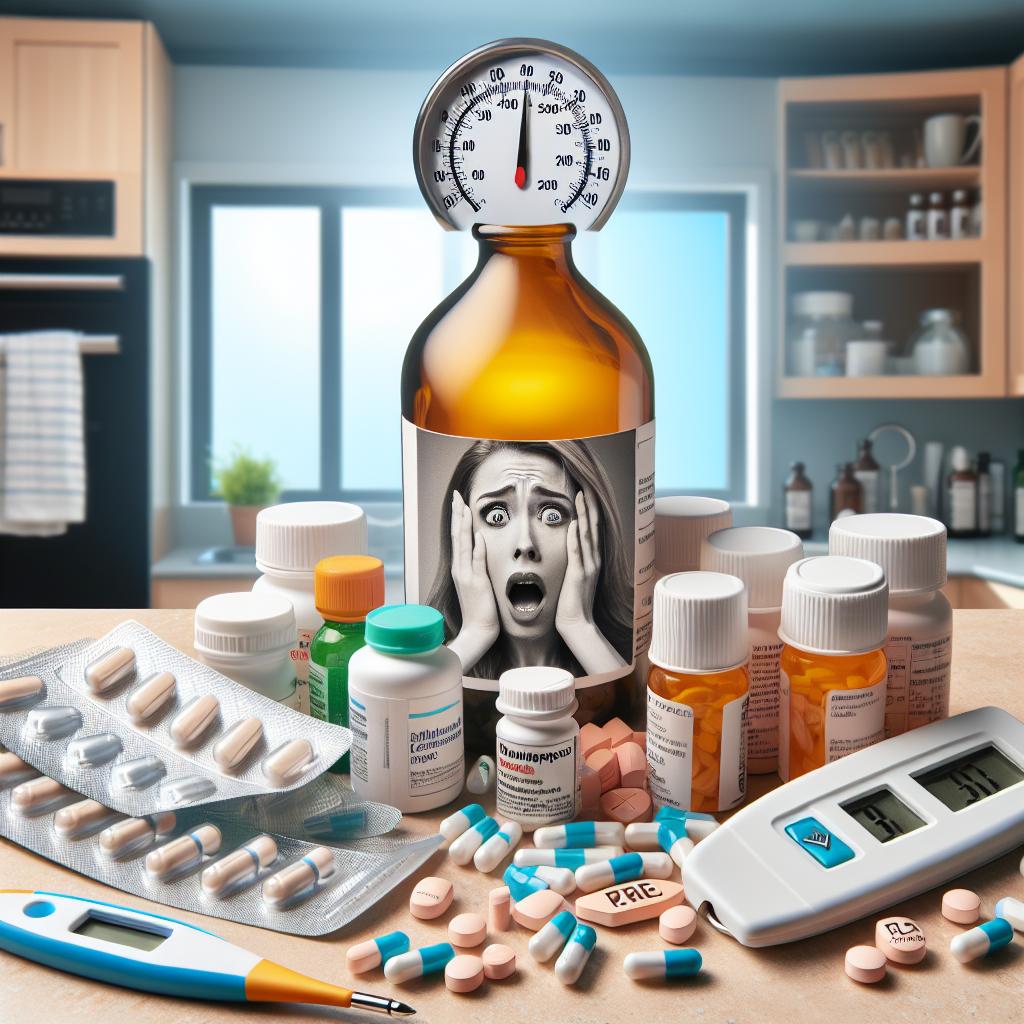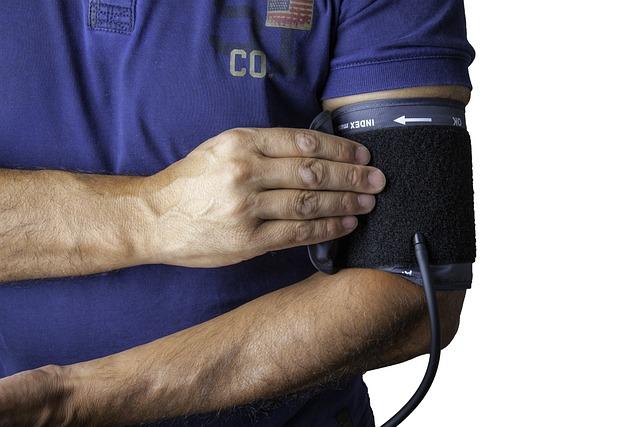Forgot to Refrigerate Unopened Latanoprost: What Are the Consequences?
Have you ever had that sinking feeling when you realize you left your unopened Latanoprost sitting out on the kitchen counter instead of safely chilling in the fridge? Don’t worry; you’re not alone! We’ve all been there, and while it might seem like a minor slip-up, the consequences can be far from laughable. In this hilariously informative article, we’ll dive into the implications of your forgetful frosty fate—because understanding what happens to your eye drops when they’re kept at room temperature is no joke! So grab a snack (that, ideally, has been refrigerated), and let’s unravel the chilling truth behind Latanoprost mishaps—your eyes will thank you later!
Page Contents
- Understanding Latanoprost and Its Storage Needs
- Consequences of Leaving Unopened Latanoprost at Room Temperature
- Assessing the Safety of Latanoprost After Improper Storage
- Identifying Signs of Compromised Latanoprost
- When to Consult Your Healthcare Provider
- Best Practices for Latanoprost Storage Moving Forward
- What to Do if You’ve Accidentally Left Latanoprost Out
- Exploring Alternatives for Managing Eye Pressure
- Faq
- To Wrap It Up
- Accidentally Took Two Probiotics? What You Need to Know Now
- Oleanz 2.5 mg for Psychotic Depression: A Comprehensive Guide
- Metrogyl 400 for Yeast Infection: A Reliable Treatment Option
- Does Rivaroxaban Affect Blood Pressure?
- Does Sta-Bil Have a Shelf Life? Ensure Your Fuel Stabilizer Remains Effective
- Oleanz Side Effects: What You Need to Know Before Taking It
Understanding Latanoprost and Its Storage Needs
Latanoprost, a medication commonly prescribed for the treatment of glaucoma, is sensitive to temperature variations. It is important to understand the optimal storage conditions to maintain its effectiveness. Typically, unopened latanoprost should be stored in a refrigerator at temperatures between 36°F and 46°F (2°C to 8°C). This temperature range ensures that the active ingredients remain stable and potent until the expiration date.
When latanoprost is not refrigerated, even if unopened, the consequences can be significant. Here are some potential outcomes:
- Reduced Efficacy: Latanoprost may lose its therapeutic effectiveness if exposed to higher temperatures for extended periods.
- Altered Composition: The chemical composition of the medication may change, leading to unexpected results when used.
- Increased Risk of Contamination: While unopened, prolonged exposure to uncontrolled temperatures can still pose a risk to the integrity of the packaging.
If a bottle of latanoprost was accidentally left out of the refrigerator, it is crucial to assess how long it was stored at room temperature. The following table outlines various durations and potential advice:
| Duration Outside Refrigerator | Recommendation |
|---|---|
| Less than 24 hours | Generally safe to use; monitor for any signs of instability. |
| 24-72 hours | Consult a pharmacist or doctor before use; may be compromised. |
| More than 72 hours | Dispose of the medication safely and obtain a replacement. |
Always prioritize following storage guidelines and consult healthcare professionals if there’s any doubt about the safety and efficacy of your medication.
Consequences of Leaving Unopened Latanoprost at Room Temperature
Leaving unopened Latanoprost at room temperature can lead to several potentially serious consequences, impacting both the effectiveness of the medication and the health of individuals relying on it. Latanoprost, an ocular hypotensive agent, is meant to be stored in the refrigerator to maintain its potency and stability. When it’s exposed to higher temperatures, even for short periods, the active ingredients can degrade, rendering the medication less effective or even ineffective.
Some of the primary consequences of improper storage include:
- Loss of Efficacy: The main concern with Latanoprost is that its ability to lower intraocular pressure may be compromised.
- Possible Side Effects: Degraded medications can produce unexpected side effects, which could lead to additional health complications.
- Increased Costs: Patients may need to repurchase their medication, leading to unnecessary financial strain.
To underscore the importance of correct storage, consider the following table summarizing recommended storage conditions versus potential risks of misuse:
| Storage Condition | Expected Outcome |
|---|---|
| Refrigerated (2°C to 8°C) | Full potency, effective treatment |
| Room Temperature (<23°C) | Potential loss of potency, increased risk of adverse effects |
| Exceeding Recommended Temperature | High risk of medication degradation, ineffective treatment |
Assessing the Safety of Latanoprost After Improper Storage
When it comes to latanoprost, a medication commonly used to lower intraocular pressure in conditions like glaucoma, proper storage is crucial for ensuring its safety and efficacy. If you find yourself in a situation where the unopened bottle has been left at room temperature instead of being refrigerated, it raises important questions about what to do next.
Firstly, consider the potential impact of improper storage:
- Stability: Latanoprost is sensitive to temperature changes. Exposure to temperatures above the recommended range may compromise the chemical stability of the product, potentially diminishing its effectiveness.
- Microbial Growth: Although unopened, storing medications incorrectly can create a risk for microbial contamination, which poses serious health risks upon administration.
- Expiration Date: Even if unopened, the effectiveness may be jeopardized if the storage conditions were not ideal, raising concerns about whether to use the medication past its printed expiration date.
It’s essential to contact a healthcare provider or pharmacist for guidance. They can offer specific advice tailored to your situation, helping you decide whether to discard the product or if it can still be safely used. Keeping a close eye on storage conditions in the future will prevent such dilemmas and ensure that the medication remains safe and effective for your eye health needs.
Identifying Signs of Compromised Latanoprost
When it comes to determining if your unopened latanoprost has been compromised after being left unrefrigerated, it’s crucial to be aware of the signs that may indicate degradation. First, check the appearance of the solution. If the liquid has changed color, become cloudy, or contains floating particles, these changes are red flags that the product may no longer be safe to use.
Next, consider the odor of the medication. A strong, unpleasant smell that deviates from its usual scent can indicate chemical breakdown, making it advisable to avoid using the product. Additionally, if you notice any separation or unusual consistency when inspecting the bottle, it’s best to err on the side of caution.
| Sign | Description |
|---|---|
| Color Change | Solution turns darker or unusual colors |
| Cloudiness | Presence of haze or sediment in the liquid |
| Unpleasant Odor | Strong, chemical-like smell |
| Consistency | Liquid appears thicker or separates |
Always prioritize your safety and the effectiveness of your medication. If any of these signs present themselves, it’s recommended to consult your pharmacist or healthcare provider for further guidance on disposal and obtaining a fresh supply.
When to Consult Your Healthcare Provider
If you find yourself in a situation where you have accidentally left unopened latanoprost outside of refrigeration for an extended period, it is crucial to consider certain signs and symptoms that may indicate a need for professional medical advice. Consulting your healthcare provider is recommended if you experience any of the following:
- Visual Changes: If you notice any changes in your vision, such as blurriness or unusual halos around lights.
- Eye Irritation: Development of redness, swelling, or discomfort in the eyes after using the medication.
- Allergic Reactions: Signs of an allergic response, including rash, itching, or difficulty breathing.
Additionally, if you have stored your latanoprost improperly and are uncertain about its potency, a discussion with your healthcare provider can clarify whether it’s safe to continue using the medication or if a replacement is necessary. Take note of any unusual symptoms experienced after mistakenly using the medication and communicate these with your provider to determine the best course of action.
Best Practices for Latanoprost Storage Moving Forward
To ensure the efficacy and safety of Latanoprost, proper storage is crucial. Adopting best practices for storing this medication can significantly extend its shelf life and maintain its quality. Here are some recommendations:
- Refrigeration: Always store unopened Latanoprost in the refrigerator at temperatures between 2°C to 8°C (36°F to 46°F). This helps prevent degradation and ensures the medication remains effective.
- Avoid Freezing: Do not allow the medication to freeze. If Latanoprost has been frozen, discard it even if it appears normal.
- Keep Away from Light: Store the bottle in its original box to protect it from light exposure, which can compromise the solution.
- Check Expiration Dates: Regularly review the expiration date on the packaging and discard any expired medication safely.
- Follow Storage Instructions: Always adhere to the storage instructions provided by your pharmacist or included in the medication guide.
Creating an organized medication storage area can also be beneficial. Consider using a dedicated shelf in your refrigerator to minimize the risk of accidental temperature fluctuations. Label containers clearly and keep track of any medications that need special storage conditions. By implementing these practices, you can significantly improve the reliability of Latanoprost therapy and safeguard your health.
What to Do if You’ve Accidentally Left Latanoprost Out
Accidentally leaving unopened Latanoprost out of refrigeration can be concerning, but there are steps to take to ensure safety and efficacy. First and foremost, assess how long the medication has been left at room temperature. Generally, if it has been less than 30 days at a temperature not exceeding 25°C (77°F), it may still be effective. However, always check the manufacturer’s guidelines for specific recommendations.
If you find yourself in this situation, consider the following actions:
- Check Packaging: Look for any guidelines on the packaging or patient information leaflet that indicate temperature limits.
- Contact Your Pharmacist: Always consult your healthcare provider or pharmacist. They can provide specific advice based on your situation and the recently expired temperature conditions.
- Observe for Changes: Inspect the medication for any noticeable changes in color, consistency, or clarity.
It’s crucial to remember that proper storage is essential for maintaining the efficacy of Latanoprost. If you determine that the drug is compromised, it’s best to dispose of it properly and obtain a new prescription. Keeping track of medications and their storage needs can prevent future mishaps and ensure that your treatments remain effective.
Exploring Alternatives for Managing Eye Pressure
When it comes to managing elevated eye pressure, especially in patients with glaucoma, many may worry about the effectiveness of medications like latanoprost that have not been stored properly. Fortunately, there are various alternatives and strategies to consider if you’re concerned about how to keep your eye pressure in check. Here’s a look at some potential approaches:
- Eye Drops: Besides latanoprost, there are other topical medications available, such as:
- Brimonidine
- Timonidine
- Carbonic anhydrase inhibitors
- Oral Medications: Systemic treatments might also be advised, including:
- Acetazolamide
- Dorzolamide
- Laser Therapy: Procedures like selective laser trabeculoplasty (SLT) can effectively lower intraocular pressure without the need for additional medications.
Moreover, incorporating lifestyle changes can also play a significant role in managing eye pressure:
| Strategy | Benefit |
|---|---|
| Regular Exercise | Can help lower eye pressure |
| Healthy Diet | Rich in antioxidants; promotes overall eye health |
| Stress Management | Reduces fluctuations in blood pressure and eye pressure |
Exploring alternatives offers not only peace of mind but also a diversified approach to maintaining healthy eye pressure. Always consult with an eye care professional to tailor a treatment plan that best suits your individual needs.
Faq
Q&A: Forgot to Refrigerate Unopened Latanoprost: What Are the Consequences?
Q: What is Latanoprost and why is refrigeration important?
A: Latanoprost is a medication primarily used to treat increased intraocular pressure in conditions like glaucoma and ocular hypertension. It’s important to refrigerate unopened Latanoprost because it helps maintain the medication’s stability and efficacy. Latanoprost can be sensitive to temperature, and keeping it cool can prevent degradation.
Q: What happens if unopened Latanoprost is not refrigerated?
A: If unopened Latanoprost is not refrigerated, it can potentially be less effective when you do use it. Temperature fluctuations can lead to chemical changes in the medication that might reduce its potency. While it might not become harmful, it’s definitely not guaranteed to work as intended.
Q: How long can unopened Latanoprost be left at room temperature before it becomes problematic?
A: Generally, unopened Latanoprost should be stored between 2°C to 8°C (36°F to 46°F). While short periods at room temperature (like a few days) may not severely impact its effectiveness, longer durations—especially in warmer conditions—could be more concerning. Always refer to specific manufacturer guidelines or consult your pharmacist for exact recommendations.
Q: What should I do if I’ve left my unopened Latanoprost out of the fridge?
A: If you’ve left your unopened Latanoprost out at room temperature, first check how long it’s been exposed. If it’s only been a short time (a couple of hours), it’s likely still safe to use. However, if it’s been left out for a prolonged period, it’s best to consult your pharmacist or healthcare provider for advice. They may suggest replacing it to ensure you’re using an effective medication.
Q: Can I still use Latanoprost that has been improperly stored?
A: It’s not recommended to use Latanoprost that has been improperly stored for any significant period without consulting a healthcare professional. While it may not be harmful, the reduced potency could compromise your treatment, leading to uncontrolled eye pressure.
Q: Are there any risks associated with using ineffective Latanoprost?
A: Yes, using Latanoprost that may have lost its effectiveness can lead to increased intraocular pressure, potentially resulting in worsening glaucoma or other complications. It’s essential to maintain proper treatment to protect your vision.
Q: What can I do to prevent this issue in the future?
A: To prevent forgetting to refrigerate Latanoprost, consider these tips:
- Store it in a designated spot in the refrigerator with a clear label.
- Set reminders on your phone or calendar.
- When you receive a new bottle, check the expiration date and be mindful of how to store it.
Staying organized can help ensure your medication stays effective.
Q: Is there anything else I should keep in mind about storing Latanoprost?
A: Yes! Always check the packaging for any specific storage instructions provided by the manufacturer. Also, be aware of the medication’s expiration date, as using expired products—regardless of storage—can be ineffective and potentially unsafe.
To Wrap It Up
while it might seem like a minor oversight to accidentally leave an unopened bottle of Latanoprost out of the fridge, the implications can be significant. Understanding how storage conditions affect the efficacy of your medication is crucial for maintaining your eye health. If you find yourself in this situation, it’s always best to err on the side of caution. Consult with your healthcare provider for guidance tailored to your specific circumstances. Remember, your health is too important to take risks with, so stay informed and proactive about your treatments. Thank you for reading, and take care of those precious peepers!




